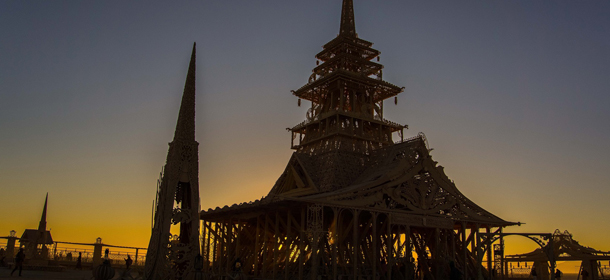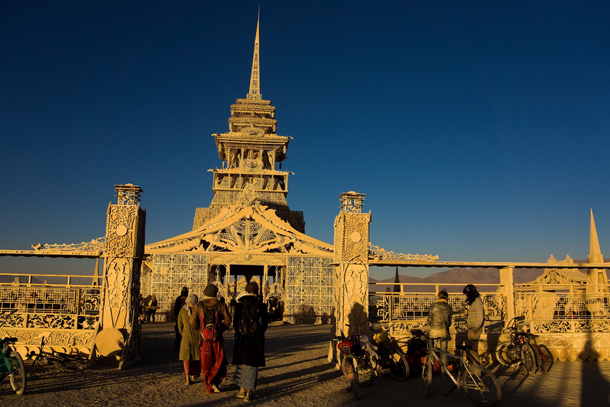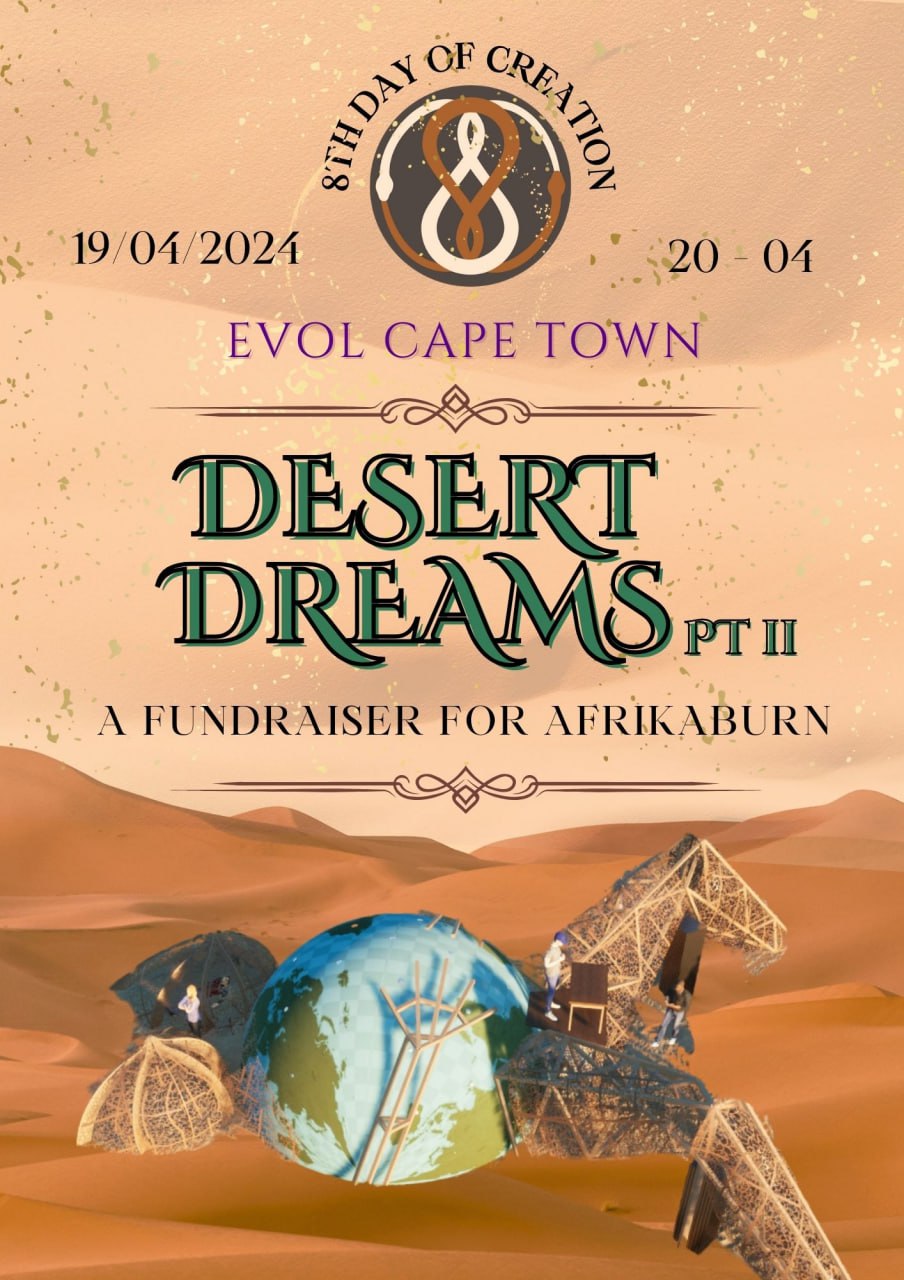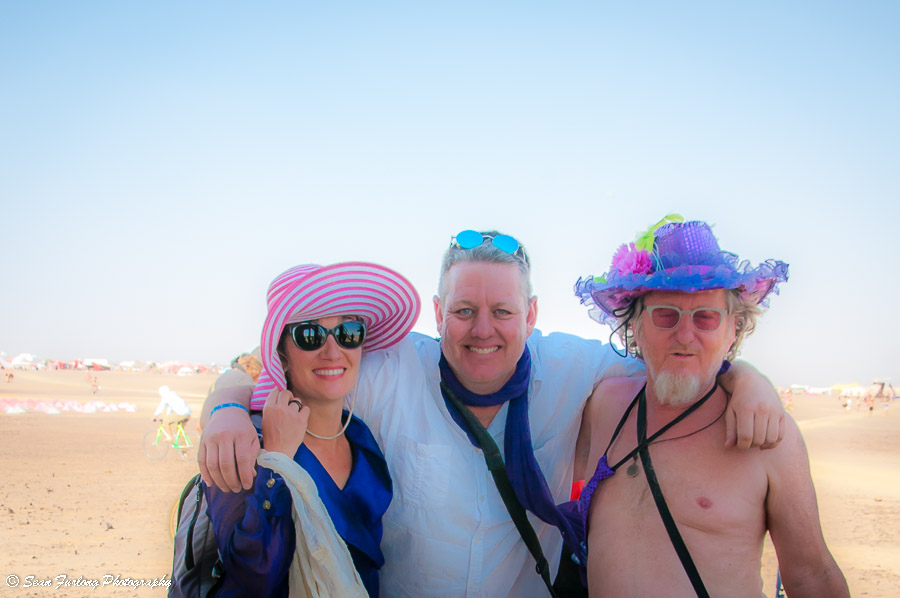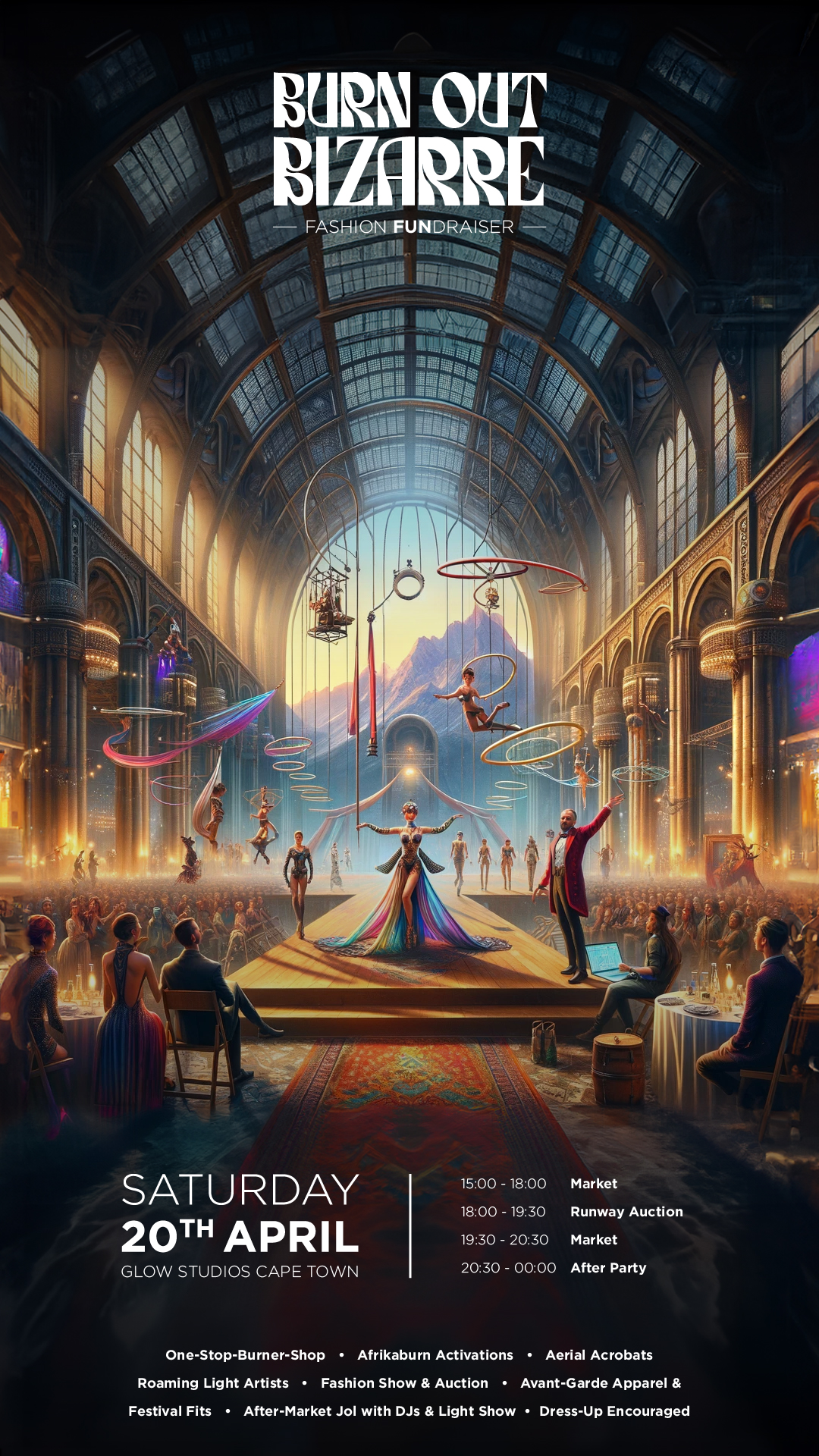From a Burner in the US, here’s a very moving story that sheds light on the Temple, and the role it plays in our community:
In 2010, I met a girl named Coco at Burning Man. Coco had flown from Paris to Reno, made her way to Black Rock City, and then sauntered into our camp. I was sitting on a mattress in my U-Haul trailer (a “poor man’s RV”) when she arrived.
“Hi, I’m Coco,” she said. Noticing the mattress, she continued, “Is this a real mattress?”
People talk about a lot of odd things at Burning Man (i.e., art, camping, music, and sex) but as far back as I can remember no girl ever started a conversation with me by asking about my mattress. Yet, it was definitely happening now.
Loren: “Yes, it’s a real mattress.”
Coco: “It’s your bed? Are you with anyone? I mean is anyone else sleeping here? Can I sleep here?” I took a look at Coco. She was wearing running shoes, shorts, and a top that seemed to reveal more than conceal.
Loren: “We can talk about it. Come on in.”
Coco climbed into the trailer. It was her first time at Burning Man. She was staying with friends in a really nice RV, but it was “kind of crowded” and her “mattress was just a piece of foam.”
Coco: “It’s getting kind of hot in here.” I turned on a fan, and she concurrently removed her top.
Loren: “Welcome to Burning Man,” I said as much to myself as to Coco. A friend passing by the trailer noticed Coco. He stuck his head inside, and offered us a joint.
Coco: “Oh, no thank you. I’m a flight attendant. They test us.”
Coco moved into my U-Haul. The following day, I planned to go to the temple and invited her to join me. This was my 7th burn, and normally, I’d be jaded about visiting the temple. But this would be different. Coco had had a twin sister who had committed suicide, on New Year’s Eve, the year prior.
I asked Coco, “Do you think your sister got really depressed, on New Years, and suddenly killed herself?”
Coco answered, “No, I think she’d been planning it for a while, and deliberately chose New Year’s, so we would remember her on that date.” Coco wanted to write her sister a note, and leave it in the temple.
Coco and I rode our bikes to the temple, parked, and then walked inside. A small wooden box, the size of a shoebox, caught my eye. It said, “Dad, you finally made it to Burning Man.” For some reason, perhaps because I always wanted to bring my own dad, 75, to Burning Man, I was especially moved by that box. Only, I don’t want to bring my dad in a box. I want him there to see what we created in his back yard, and store in his basement. I want him to see what we see.
I left the box, and continued walking around the temple. I spotted a notebook, placed high in the wall. Curious, I reached up, and retrieved the notebook. It said, “In Memoriam … of Burners.” I turned the page. Inside were the stories of burners who had committed suicide. Someone had compiled the stories into a single book and published it. Someone else had decided it was time to burn the book.
I showed the book to Coco. I sat down, and she sat next to me. For an hour, we read the biographies in the book. It was moving. Actually, it was heartbreaking. After a time, Coco started to cry. I knew it was time to leave. I put the book back where I found it, and we started to walk toward our bikes.
We were halfway to the bikes when a dust storm approached, and suddenly, they disappeared. It was like someone shook the “etch-a-sketch” and our bikes simply vanished, leaving nothing but dark gray. We retreated, toward the temple, and, just outside the temple, found a tiny room that offered some protection, just big enough for two people.
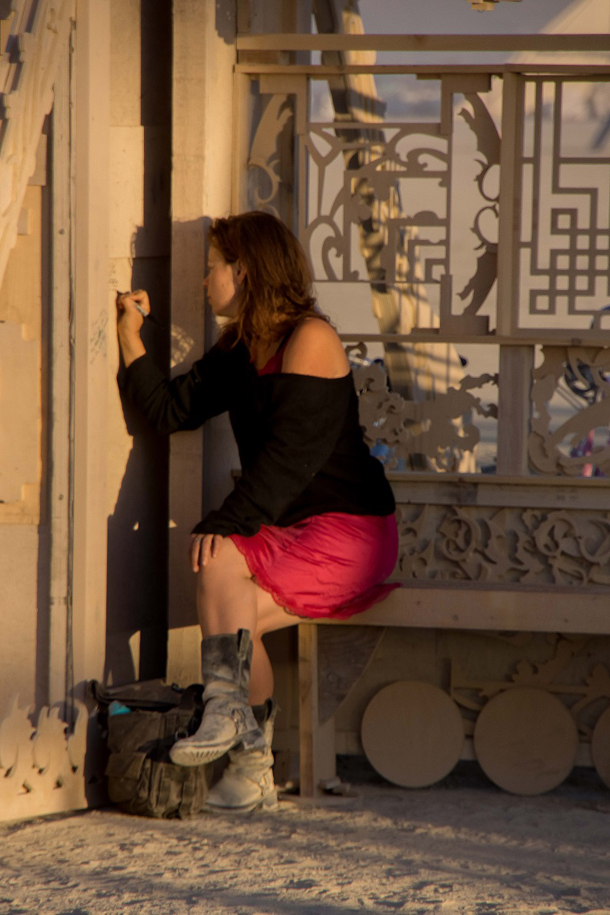
Normally, dust storms last about five minutes. This particular one lasted about an hour, and during that time, we could do nothing but sit… or, more accurately, sit with our sadness. It was a long time to sit with that much sadness. When the storm cleared, our bikes reappeared. We walked to the bikes, and then rode into the sunset.
The next day, Saturday, Coco went out with a friend, and didn’t return until dinner. At that point, Coco and her friend, also a flight attendant, were on “G.”
Loren: “What’s G?” The last letter in my alphabet is “E.”
Coco: “After E came G, and later, K.”
Loren: “I thought you were flight attendants?”
Coco: “They only test us for marijuana and cocaine. We stick to the drugs you can’t be tested for: E, G, K, LSD, Mushrooms, and Peyote.”
Loren: “Good to know.”
Sunday evening, we walked to the temple burn. 40,000 people were already there. The ceremony began. I can’t describe it. It lacks the festivities associated with Saturday night; it’s very solemn. They ignite the temple, it catches fire, and an orange light is cast on the playa … and in that light, if you look around you, you see something you’ll never see anywhere else: 40,000 people crying.
The following year, on January 1st, 2011, I bicycled from Santa Cruz to San Francisco alone. The Pacific Ocean was on my left, the mountains on my right. It was cold, foggy, rainy, and windy. I couldn’t stop thinking about recent losses: a job, a relationship, etc. The moisture seeped into my pores, lubricated the path to my brain, and the ocean poured in. Suddenly, I wasn’t biking at all. I was swimming in a “Sea of Sadness,” and no matter what direction I turned, there was just more sadness. For three months, I swam in that “The Sea of Sadness.” Coco’s sister probably swam in that same water.
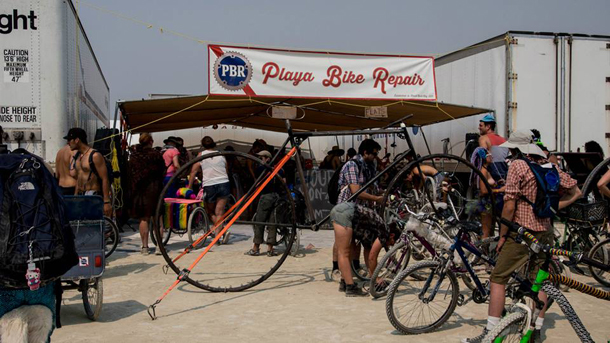
That August, I started a theme camp, called “Playa Bike Repair.” Two people offered to help. I picked them up in my U-Haul, and we met for the first time. Neither had ever been to Burning Man.
At Burning Man, we mostly fixed tires and chains, but on the morning of the first day we ran out of both. So we put a sign on the street, explaining the situation. Parts were donated, and soon mechanics were dropping in. We told people, “We’ll show you how to fix your bike, if you help two other people afterward.” By the end of our first week, our 3-person camp had collectively repaired over 500 bikes.
“Playa Bike Repair,” now in its third year, has fifty campmates, owns three semi-trailers, and a small fleet of bikes we rent to fund repairs. Last year, we helped 3,000 people repair their bikes in our camp at 9:00 Plaza.
Last August, I sat in the back of a trailer, in our new storage location, which is located next to a bar in Sonoma. An older man, about my dad’s age, approached me and asked, “How many bikes you have in there?”
I cringed. I was fairly certain the man had come from the bar, and therefore likely that he was “the town drunk”, or worse, “town crack addict,” and was planning to steal all our bikes.
Loren: “I don’t know.”
Man: “Have room for a golf cart?”
Loren: “What?”
Man: “You’re going to Burning Man, right? Can you take my golf cart?”
Loren: “We can talk about it. What’s your name?”
Man: “David.”
Loren: “What’s your last name?”
David: “Best.”
Loren: “David Best? The guy who builds the temple?”
David: “That would be me.”
Loren: “You’re not the town crack head planning to steal all my bikes?”
David: “No, that’s not me.”
Loren: “Well, I’ve got a story for you.” I told David about Coco, the book we found, and sitting with our pain.
David: “That book was compiled by a friend of mine. Inspired by Jermaine Barley, who hanged himself at Burning Man, in 2007. Which bike camp do you run?
Loren: “Playa Bike Repair, at 9:00 Plaza.”
David: “Well, I’ve got a story for you. In 2000, a friend of ours committed suicide. When we were cleaning out his place, we found his ticket to Burning Man, and we wondered what we ought to do with it. We figured our friend would want us to go. So, I took the ticket, and we got some more tickets for everyone else, and we went to Burning Man. In the desert, we made a little temple, to honor our lost friend. Every year, we build it in someone’s honor.”
Loren: “What do you do while the temple is Burning?”
David: “I walk around, and tell people it’s not their fault. A lot of the people are there to grieve for someone. Often, they are grieving for someone who committed suicide. In those instances, the survivors tend to blame themselves, which is wrong. So, I walk around, and tell them, “It’s not your fault.”
Loren: “How do you know who is grieving for someone who committed suicide?”
David: “I just know.”
Loren: “I’ve never heard any of this before.”
David: “We don’t talk a lot about our reasons for building the temple, or promote it, because it doesn’t fit that nicely with Burning Man’s overall theme. Plus, our ceremony is a bit of a burden. They have to run the event a whole extra day to accommodate us.”
Loren: “The temple burn is pretty solemn. But a rogue art car once turned their stereo on during the ceremony. Remember?”
David: “They played Freebird. The whole 14 minutes. At least they didn’t play Twist and Shout.”
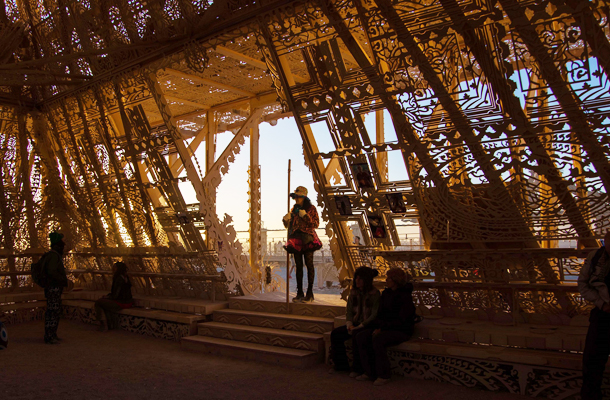
Loren: “How many years have you been building the temple?”
David: I’ve been doing it since 2000. I don’t do it every year, but more often than anyone else. And recently I decided that I don’t want to do it anymore. It’s a lot of work, and it costs me about $25k every year. Last year, I was in your camp, and a mechanic was working on my bike. I don’t remember her name. She had a lot of tattoos. Maybe you know her?”
Loren: “Sorry, no.”
David: “I told her I wasn’t going to build the temple anymore. She said, ‘My boyfriend recently committed suicide. I came to Burning Man to put a note in the temple, in his honor.'”
David: “It was very important to her that I continue to build the temple. Anyway, the conversation moved me. I decided to build the temple for one more year, and I would build it in her honor. In 2012, I built the “Temple of Juno” in your campmate’s honor.”
Every year since 2004, I’ve made the pilgrimage to Burning Man. People often ask me why I go back, year after year. There is the allure of women like Coco, the thrill of running a bike camp, and the spiritual significance of the temple burn. I like the way seemingly disparate people and places (Coco; the volunteer at Playa Bike Repair; David Best) not only interact, but also connect.
So, what’s the best thing about Burning Man? For me, it all comes down to a single moment; that indescribable feeling you get when you learn the temple was built in honor of your campmate, whom you don’t even know.
Loren Geller
www.PlayaBikeRepair.com
www.facebook.com/playabikerepair
[email protected]
“The meaning of life is to find your gift.
The purpose of life is to give it away.”
– Pablo Picasso

